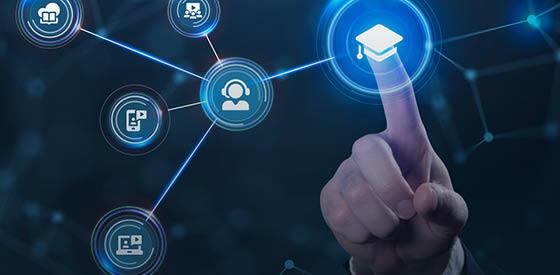How 5G Technology is Revolutionizing Online Learning: Enhancing Speed, Interactivity, and Accessibility
5G technology is reshaping our digital landscape in remarkable ways, and online learning is one of the sectors experiencing the most profound transformation. As the world increasingly embraces remote education, students and educators need reliable, high-speed, and smooth connectivity more than ever. In this comprehensive guide, we’ll explore how 5G is revolutionizing digital education by enhancing speed, interactivity, and accessibility, as well as provide practical insights, case studies, and tips on leveraging this next-gen technology for better learning outcomes.
what is 5G Technology?
5G, or fifth-generation wireless technology, is the latest standard for mobile networks. It promises not only ultra-fast internet speeds but also extremely low latency and the ability to support a massive number of connected devices at once. Compared to its predecessor, 4G, 5G can deliver speeds up to 100 times faster and provides a far more reliable connection even in densely populated areas.
- Speed: Capable of gigabit-per-second downloads and uploads.
- Latency: As little as 1 millisecond, making real-time responses practical.
- capacity: Supports vast numbers of users and simultaneous connections.
The Impact of 5G Technology on Online Learning
The integration of 5G in e-learning platforms and virtual classrooms is opening new possibilities. Here’s how 5G is making a seismic impact on digital education:
1.Lightning-Fast Connectivity
- Seamless video streaming: High-quality video lectures are now free from buffering and interruptions.
- Instant content delivery: Downloads of large assignments or interactive resources happen in seconds, not minutes.
- Consistent connectivity in remote areas: 5G enables students in previously underserved regions to participate in online education with fewer barriers.
2. Real-Time Interactivity
- Interactive and immersive learning experiences using Augmented Reality (AR) and Virtual Reality (VR) are now feasible with low latency.
- Live collaboration tools — such as digital whiteboards and group activities — are more responsive, fostering dynamic discussion and teamwork.
- Instant feedback from quizzes, assessments, and AI tutors, keeping learners motivated and engaged.
3.Enhanced Accessibility
- Bridging the digital divide: 5G makes high bandwidth and stable connections available even outside of big cities.
- Accessibility for learners with disabilities: Smooth streaming supports closed captions, real-time transcription, and other assistive technologies.
- Ubiquitous mobile access: Learners on smartphones and tablets can participate in online courses anywhere, anytime.
Key Benefits of 5G in Online Learning
- Improved engagement: Interactive platforms keep students attentive and motivated.
- Scalability: Educators can reach hundreds or thousands of learners concurrently without connectivity issues.
- Personalization: Adaptive learning powered by AI works best with ultra-fast, responsive bandwidth.
- Global reach: 5G erases borders and time zones, facilitating international online education.
Case Studies: Real-World Examples of 5G in Online education
in 2023, a 5G pilot project in Maharashtra enabled rural schools to access interactive video classes with real-time Q&A sessions. Teachers coudl share AR-based science demonstrations,leveling the playing field for students who had previously lacked quality resources.
South Korean universities, leveraging 5G, introduced VR-based English and Chinese classes where students engaged in realistic conversation simulations, resulting in higher exam scores and confidence.
African ed-tech startups used 5G connectivity to stream complex STEM experiments to students in remote areas using affordable devices, significantly increasing science and math engagement.
First-Hand Experiences: Voices from Learners and Educators
“with 5G, I can download lecture videos and join lab simulations on my phone with no buffering.It’s like being in a real classroom wherever I am.”
— Priya, Online Biology student
“We can finally bring group projects to life in real time. Students share ideas, annotate documents live, and even participate in AR-based field trips.”
— Dr. Michael Evans, Digital Learning Coordinator
Practical Tips: Making the Most of 5G for Online Learning
- Upgrade devices: Ensure that your smartphone, tablet, or computer supports 5G for optimum performance.
- Leverage interactive tools: Try virtual labs, AR flashcards, and live discussion boards to fully experience 5G’s possibilities.
- Stay secure: Use vpns and trusted apps to protect your data while enjoying high-speed connectivity.
- Monitor your data: High-quality video and interactive content can consume more data, so stay aware of your usage or opt for unlimited plans.
- Participate in global classrooms: Take advantage of international courses and collaborations now made accessible with 5G.
Challenges and Considerations
- Device compatibility: Not all existing devices are 5G-ready; some upgrades may be necessary.
- Network rollout: 5G networks are expanding rapidly but may not be available everywhere yet.
- Digital literacy: Both students and educators need to be familiar with new tools and workflows enabled by 5G.
- Privacy: As data transfer increases, so does the importance of secure, private learning environments.
future Trends: What’s Next for 5G and Online Education?
The ongoing evolution of 5G technology suggests a future in which online learning is even more immersive, inclusive, and flexible. Expect trends such as:
- AI-powered learning environments delivering real-time personalized content and assessment on any device.
- Mass adoption of AR/VR classrooms, allowing hands-on experience in science, engineering, art, and medicine remotely.
- IoT in education, where smart sensors and connected devices provide interactive learning resources and progress tracking.
- Globalized education ecosystems where students from any country can access the world’s top courses seamlessly via 5G.
Conclusion: Embracing the 5G-Powered Learning Revolution
5G technology stands as a true game-changer for online learning, making education faster, richer, and more accessible than ever before. As more institutions, educators, and students integrate 5G into their daily lives, the digital classroom will become a space where anyone, anywhere, can learn without limits.
Whether you’re a student eager for seamless access to education, a teacher looking for innovative ways to engage your class, or an ed-tech provider aiming to empower learners worldwide, the time to embrace 5G-powered online learning is now.
Stay connected, stay curious, and get ready for the future of learning, powered by 5G.

